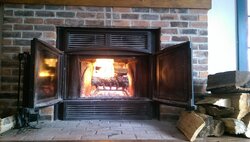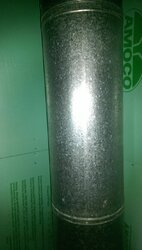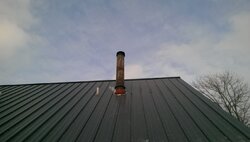Hi everyone! This is my first post.
I bought a home last year, it’s about 20 years old and 2600 sqft. It has a zero clearance fireplace “Superior” (now Lennox) model SP38A. The cost of propane kills me and I try to use this fireplace to help heat my home. But obviously it does not have good efficiency. I have to feed a ton of wood and get it blazing hot to help on cold days these past two winters. I swear it almost sucks more cold air in the house than heat it produces. My house is always cold and I need some better options.
Question #1: Could I modify this current fireplace….. run a duct for combustion air ….better seals and use this unit efficiently?
Question #2: If modifications to my current unit is not an option could I just replace the insert with a high efficiency model? I have no idea what would be compatible any ideas and opinions on models? I got two quotes from Lennox dealers in my local area, and they would only quote a complete switch out of all components (Fireplace, Flue, Rain Cap, Mantle, Etc…) and prices ranged from $10K-12K. I don’t have that kind of money to drop on this. I have a double wall stainless flue I really think this could be reused, and save a ton of work and cost.
Questions #3 If neither 1 and 2 work I also thought of buying a traditional Wood stove and sticking it in the basement. I’m sure this is doable but kind of an ugly option for me. I don’t have any venting options beside penetrating the basement wall and running up the side of the house.
Please send some advice this way… Options?…. Opinions?
I’ve been in commercial construction for the past 15 years so I’m capable of doing a lot if not all work my self. I’m just a little unsure on this and want to keep my house safe for my awesome wife and two small boys.
I only have $2k-3K max to spend on this project.
Thanks!
I bought a home last year, it’s about 20 years old and 2600 sqft. It has a zero clearance fireplace “Superior” (now Lennox) model SP38A. The cost of propane kills me and I try to use this fireplace to help heat my home. But obviously it does not have good efficiency. I have to feed a ton of wood and get it blazing hot to help on cold days these past two winters. I swear it almost sucks more cold air in the house than heat it produces. My house is always cold and I need some better options.
Question #1: Could I modify this current fireplace….. run a duct for combustion air ….better seals and use this unit efficiently?
Question #2: If modifications to my current unit is not an option could I just replace the insert with a high efficiency model? I have no idea what would be compatible any ideas and opinions on models? I got two quotes from Lennox dealers in my local area, and they would only quote a complete switch out of all components (Fireplace, Flue, Rain Cap, Mantle, Etc…) and prices ranged from $10K-12K. I don’t have that kind of money to drop on this. I have a double wall stainless flue I really think this could be reused, and save a ton of work and cost.
Questions #3 If neither 1 and 2 work I also thought of buying a traditional Wood stove and sticking it in the basement. I’m sure this is doable but kind of an ugly option for me. I don’t have any venting options beside penetrating the basement wall and running up the side of the house.
Please send some advice this way… Options?…. Opinions?
I’ve been in commercial construction for the past 15 years so I’m capable of doing a lot if not all work my self. I’m just a little unsure on this and want to keep my house safe for my awesome wife and two small boys.
I only have $2k-3K max to spend on this project.
Thanks!
Last edited by a moderator:




